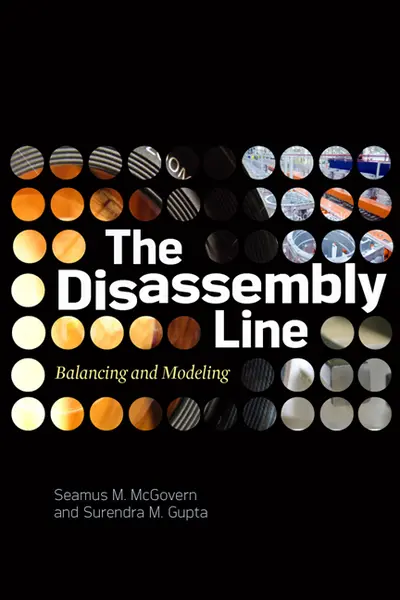My Account Details

ISBN10: 007162287X | ISBN13: 9780071622875

Step 1 . Download Adobe Digital Editions to your PC or Mac desktop/laptop.
Step 2. Register and authorize your Adobe ID (optional). To access your eBook on multiple devices, first create an Adobe ID at account.adobe.com. Then, open Adobe Digital Editions, go to the Help menu, and select "Authorize Computer" to link your Adobe ID.
Step 3. Open Your eBook. Use Adobe Digital Editions to open the file. If the eBook doesn’t open, contact customer service for assistance.
Publisher's Note: Products purchased from Third Party sellers are not guaranteed by the publisher for quality, authenticity, or access to any online entitlements included with the product. The definitive guide to the disassembly line The Disassembly Line: Balancing and Modeling provides in-depth information on this complex process essential to remanufacturing, recycling, and environmentally conscious manufacturing. This pioneering work offers efficient techniques required to solve problems involving the number of workstations required and the disassembly sequencing of end-of-life products on the disassembly line. In this book, the disassembly line balancing problem (DLBP) is described, defined mathematically, and illustrated by case studies. Combinatorial optimization methodologies are presented as solutions to the DLBP. Coverage includes: Graphical representations of products to be disassembled Computational complexity of combinatorial problems Description of the disassembly line and the mathematical model Computational complexity of the DLBP Combinatorial optimization searches Experimental instances Analytical methodologies Exhaustive search Genetic algorithm Ant colony optimization Greedy algorithm Greedy/adjacent element hill climbing hybrid Greedy/2-opt hybrid H-K heuristic Quantitative and qualitative comparative analysis This authoritative volume also covers product planning, line and facility design, sequencing and scheduling, inventory, just in time, revenue, and unbalanced lines.
Need support? We're here to help - Get real-world support and resources every step of the way.